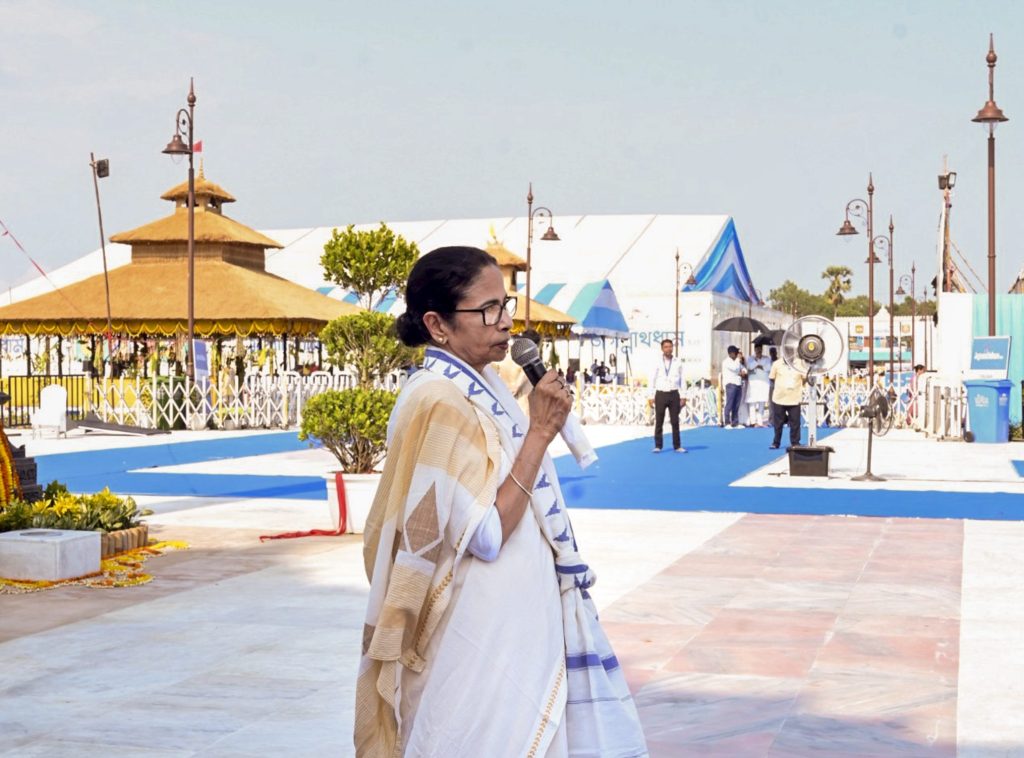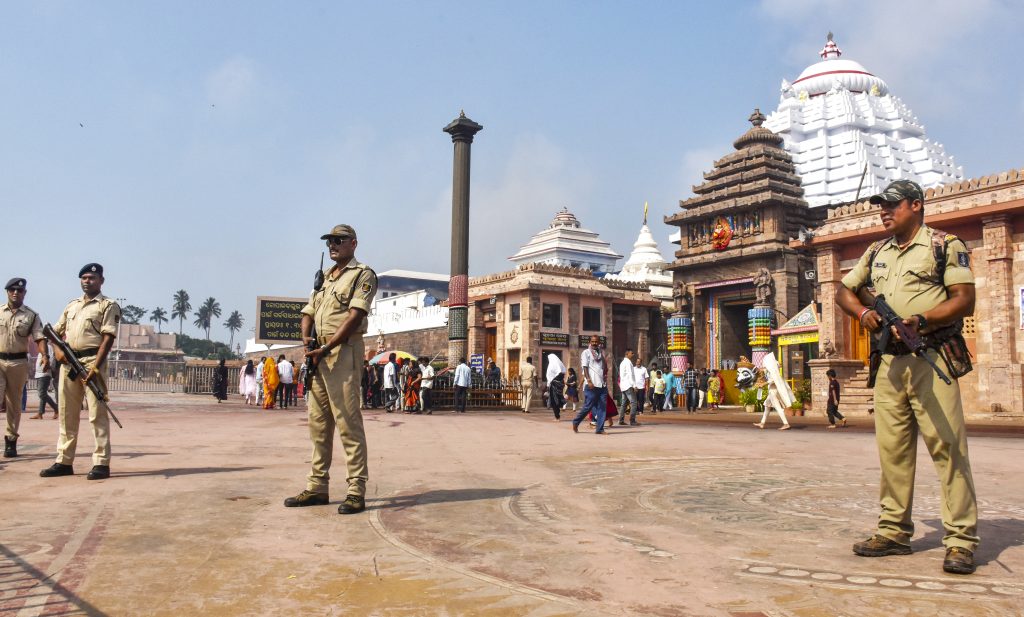The Digha Jagannatha Temple and the Hinduisation of Odia Identity
The recent inauguration of a Jagannatha temple at Digha in West Bengal has become a matter of great controversy. It has been constructed with the patronage of the state government.
The primary controversy relates to the official designation of this monument as a Jagannatha dham. Traditionally, there are four dhams or special divine abodes in Hinduism, with Puri being one of them. Applying the same term for a new monument is said to be a violation of this.
Using the label of dham for a religious site other than the traditional ones is not a new practice. For instance, it is also used for Nabadwip, the birthplace of Chaitanya.
However, the Digha issue has created an opportunity especially for the Bharatiya Janata Party (BJP) to criticise the West Bengal government headed by chief minister Mamata Banerjee. She has been accused of disrespecting Hindu belief and trying to divide Hindus through this issue. The BJP government in Odisha is treating this issue with extreme seriousness, directing much attention and energy towards it.
Progressives have questioned her for toying with Hindutva by constructing a temple. It is a clear attempt on her part to woo the Hindu electorate towards her party and away from the BJP.
What the national media seem to have missed is the implication of this event for Odia identity. It has not only revealed the strongly Hindu character of this identity but also contributed to its further Hinduisation.

Bengal Chief Minister Mamata Banerjee during the inauguration of the newly built Jagannath Temple in the sea resort town of Digha on the occasion of Akshay Trithiya, in Purba Medinipur district, Wednesday, April 30, 2025. Photo: PTI.
Jagannatha’s importance for Odia identity
A movement demanding a separate province for Odias under British India started in the second half of the nineteenth century (which culminated in the formation of Odisha in 1936). The construction of Odia identity began in this context.
Jagannatha had a central place in this Odia nationalist project. Not only was he the state-deity of the medieval Odishan empire, but his cult was also extremely influential in the socio-cultural and religious lives of the people.
Additionally, this deity had a significant advantage over the Odia language as a unifying symbol. The Odisha region had a significant number of Adivasis whose mother tongue was not Odia. Hence it was realised that all the people who were to be included in the proposed province could not be unified on the basis of this language. In this context Jagannatha emerged as an alternative symbol around which the identity could be constructed.
The Shavaras, an Adivasi community of Odisha, are traditionally regarded as the original worshipper of the deity. The Puri temple had (and still has) a group of servitors who trace their origin to the former. Hence it was possible to assimilate Adivasis to the Odia nation in the name of Jagannatha.
Odia nationalists also felt that their demand for a province of their own could be bolstered by ensuring recognition for their cultural distinction. While many people beyond Odisha had no knowledge of its language or culture, Jagannatha was well-known across the subcontinent as the presiding deity of a prominent Hindu dham. These were reasons why he was appropriated for the Odia nationalist cause. Since then he has been associated with this identity.
Much of coastal Odisha was a part of the Bengal Presidency from which it wanted to secede. So Odia nationalists were invested in distinguishing their culture from that of the Bengalis.
However, the latter had a long-standing connection with Puri and Jagannatha, a core marker of Odia identity, primarily from the time of Chaitanya. In this context, an attempt was made to show that Odias shared a unique bond with this deity, something his non-Odia devotees could not claim.

Police personnel stand guard at the Jagannath Temple, amid tight security in the wake of the ongoing military conflict between India and Pakistan, in Puri on May 9, 2025. Photo: PTI.
The present controversy
The Digha controversy as it has unfolded in Odisha should be understood with reference to this modern history of the construction of Odia identity. Building new temples for Jagannatha anywhere and promoting his cult and culture has always been welcomed in Odisha.
However, the problem lies elsewhere. The BJP has likened the designation of the Digha temple as a dham to a violation of Hindu tradition, and also an attack on the privilege of Odisha as the land of Jagannatha. It has claimed that this is an attempt to delegitimise the unique claim of Odias on the deity.
The conflict between Bengal and Odisha over the geographical indication or GI tag to rasagola is still fresh in memory. It has provided an immediate background to the characterisation of the Digha issue as a more serious example of Bengali appropriation of what rightfully belongs to Odias. In fact, the Odisha government is currently planning to trademark certain phrases associated with the Puri Jagannatha temple.
Bengali nationalists (or regionalists) have added more fuel to the issue through their anti-Odia propaganda.
The rivalry between the two communities, which was earlier limited to accusations and counter-accusations, has begun to flare up massively. This has created a charged atmosphere suitable for the free play of communal forces.
The condemnation of the tag of dham for the new temple reproduces the Hindu aspect of the Odia identity constructed around Jagannatha. Puri’s claim to dham status is supposedly based on its designation as such by Adi Shankaracharya, a revered figure in the Brahmanical Hindu tradition. He is also credited for reinstalling the wooden image of the deity in the temple. This was said to be accompanied by the establishment of the Govardhan math as a seat of Shankaracharya in the city.
The Digha incident is seen as a violation of this very tradition. From this perspective, the coastal town of Bengal cannot be a dham as it is not a seat of this traditional Brahmanical authority.
The controversy should also be placed in the context of a particular discourse on Jagannatha and Odia identity which has been prevalent for the last few years. The Biju Janata Dal (BJD) used the deity politically when it was in power in Odisha. However, it did not actively seek to otherise the religious minorities of Odisha by Hinduising the regional identity extremely.
In contrast, the BJP began using Jagannatha in that way before coming to power to consolidate the Hindu vote. In the run-up to the 2024 elections it launched a successful campaign against the then-ruling BJD for hurting Odia asmita (pride) on various grounds.
Also read: Temple Politics and Attack on Migrants Are Escalating Tensions Between Bengal and Odisha
A number of such issues on which the BJD was criticised pertained to the Puri temple. It included the creation of a heritage corridor around this shrine by destroying old religious structures, mismanagement of the crowd of devotees seeking entry in it and the missing key of its sacred treasury, to name a few.
These issues were not merely raised as the failure of the BJD-led state administration but projected specifically as hurting the sentiments of Odias given that Jagannatha was their national god.
One incident which became extremely controversial was the entry of Kamiya Jani, a famous social media influencer, in the Puri temple upon the invitation of a BJD politician. BJP as well as Congress leaders of Odisha complained that Jani promoted the consumption of beef and hence must not have entered the temple. This was said to have hurt Hindu sentiments.
Here, the Odia and the Hindu identities overlapped. Not coincidentally, attacks on people in Odisha on the charge of consuming beef or smuggling cattle have increased over the last two years, when the BJP's popularity in the state surged and it eventually came to power last year.
Non-Hindus are not allowed inside the Puri temple. Non-consumption of beef is commonly held in the Brahmanical tradition as an important marker of Hinduness. Of late, Hindus who openly support its consumption even by others have also been treated like non-Hindus with respect to the question of temple entry.
Mamata Banerjee, who apparently supported the freedom of choice in the matter of food including beef, faced protests from some quarters during her visit to the Puri temple in April 2017. Her patronage to the Digha temple is also being criticised on the same grounds. The decision to allow the entry of people from all religions into this structure which has her backing has received criticism for the same reason.
The whole controversy is also coloured by the accusation levelled by the BJP and the Sangh parivar against the Bengal chief minister for her so-called Muslim appeasement policy and the victimisation of Hindus resulting from this.
The recent violence in Murshidabad and Bangladesh where Hindus were at the receiving end provoked backlash against Muslims in Odisha. Many Bengalis were attacked in the state on the charge of being Bangladeshis and Rohingyas. Bengali Muslim migrant workers have been targeted particularly. The frustrations over the lack of employment opportunities can take more ugly turns in communal terms.
What is happening now is a growing political trend in Odisha to equate Bengali and West Bengal with Islam, a natural corollary of which is a perceived threat to the Hindu culture of Odisha. The Digha temple case, a new addition to this trend, has only reinforced the Hinduisation of Odia identity.
Punyashlok Dash is a doctoral candidate at Jawaharlal Nehru University.
This article went live on June ninth, two thousand twenty five, at twenty minutes past eleven at night.The Wire is now on WhatsApp. Follow our channel for sharp analysis and opinions on the latest developments.




